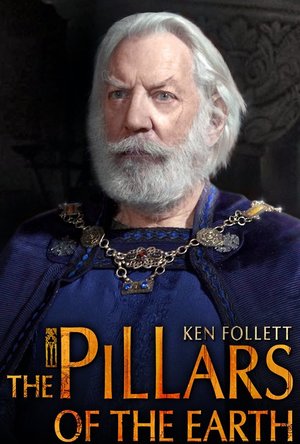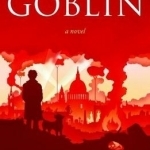Search

Rainer on Leadership
Podcast
Rainer on Leadership is your online home for leadership lessons for the local church. This...

The Pillars of the Earth
TV Show Watch
Set in 12th-century England, this eight-hour miniseries based on Ken Follett's best-seller begins...

Wade-O Radio Weekly Podcast
Podcast
The Wade-O Radio Show is an international, terrestrial, Internet radio show, and podcast that...
Eilidh G Clark (177 KP) rated Goblin in Books
Jul 2, 2019
Brilliant book, well wriiten, original
Winner of the Saltire Society first book of the year award 2017, Goblin, by Ever Dundas is a brilliant and brave first novel. Set in both London during WW2 and in Edinburgh in 2011, the story is told in flashback. For me, the first half of the novel is the best, we meet Goblin as a nine-year-old tomboy with a love for animals and a passion for storytelling - both of which the protagonist collects.
Goblin has a difficult family life; a mother who doesn’t want her, 'Goblin-runt born blue. Nothing can kill you. [...] You're like a cockroach,' (p.5) a father who mends radio’s and barely talks and a brother (David) who spends most of his time in his bedroom. Left to her own devices, the protagonist, her dog Devil, and her two friends Mac and Stevie roam the neighbourhood and hang around in an abandoned worksite. As a collector of stories, Goblin enthusiastically attends the local church with Mac, 'I loved the stories, turning them over in my head, weaving my own.' (p.24) before meeting The Crazy Pigeon Lady who tells her tales of Lizards people from the realm below. The childhood innocence in these chapters, mixed with magic realism, break down the walls of adult reasoning and creates a wonderful suspension of disbelief.
But without giving away the story plot, the suspension of disbelief serves another purpose; to divert the reader (as well as the adult protagonist) from the truth. So, while the adult Goblin searches amongst her tangled past, she takes the reader along for the ride. We meet multiple parents, live life on the road, come alive on the streets and in the circus, explore love, death, desire, and hate – and somewhere in the middle we meet an impressive collection of animals - Goblin has it all. And as far as strong female protagonists go, she’s right up there with Anais Hendricks from Jenni Fagan’s Panopticon, to Janie Ryan in Kerry Hudson’s Tony Hogan Bought Me an Ice Cream Float Before He Stole My Ma, characters who are so real you might just walk by them on the street.
The only teeny tiny criticism about the novel is that the second half spans over a lengthy period of time and it felt a little rushed. However, there is so much to say about this novel, so many angles to discuss, from Queer Theory to Religion, from Myth to Realism, and as a graduate of English Literature I could have a field day studying this book but for now, as a lover of good books, I’ll give it a big thumbs up and a huge recommendation, it’ll be finding a space on my ‘keep’ book shelve.
Goblin, Ever Dundas (2017) published by Saraband
Goblin has a difficult family life; a mother who doesn’t want her, 'Goblin-runt born blue. Nothing can kill you. [...] You're like a cockroach,' (p.5) a father who mends radio’s and barely talks and a brother (David) who spends most of his time in his bedroom. Left to her own devices, the protagonist, her dog Devil, and her two friends Mac and Stevie roam the neighbourhood and hang around in an abandoned worksite. As a collector of stories, Goblin enthusiastically attends the local church with Mac, 'I loved the stories, turning them over in my head, weaving my own.' (p.24) before meeting The Crazy Pigeon Lady who tells her tales of Lizards people from the realm below. The childhood innocence in these chapters, mixed with magic realism, break down the walls of adult reasoning and creates a wonderful suspension of disbelief.
But without giving away the story plot, the suspension of disbelief serves another purpose; to divert the reader (as well as the adult protagonist) from the truth. So, while the adult Goblin searches amongst her tangled past, she takes the reader along for the ride. We meet multiple parents, live life on the road, come alive on the streets and in the circus, explore love, death, desire, and hate – and somewhere in the middle we meet an impressive collection of animals - Goblin has it all. And as far as strong female protagonists go, she’s right up there with Anais Hendricks from Jenni Fagan’s Panopticon, to Janie Ryan in Kerry Hudson’s Tony Hogan Bought Me an Ice Cream Float Before He Stole My Ma, characters who are so real you might just walk by them on the street.
The only teeny tiny criticism about the novel is that the second half spans over a lengthy period of time and it felt a little rushed. However, there is so much to say about this novel, so many angles to discuss, from Queer Theory to Religion, from Myth to Realism, and as a graduate of English Literature I could have a field day studying this book but for now, as a lover of good books, I’ll give it a big thumbs up and a huge recommendation, it’ll be finding a space on my ‘keep’ book shelve.
Goblin, Ever Dundas (2017) published by Saraband
Gareth von Kallenbach (980 KP) rated Harriet (2019) in Movies
Nov 7, 2019
Harriet Tubman was among one of the most significant abolitionists in United States history. This film tells the story of her life where she was born in Maryland as a plantation slave. Named Araminta at “Minty” Ross, she transforms throughout her journey, becoming Harriet Tubman as well as transforming into Moses, the appropriate name for the person who leads.
The story begins after church services where Minty’s husband John Tubman who was a free slave asks the plantation owner to allow Minty to be freed so their children would be born free instead of slaves. The slave owner, Henry Broadess (Mike Marunde played with a gleeful abundance of entitlement) denies the request. This is the spark where Araminta decides to run away to live as a free person.
Minty was known for her “spells” since the accident, where she was hit in the forehead by a thrown weight. The film interprets seizures as her conversation with God. The film uses these spells as her talks with and messages received from God. That is how Harriett’s visions are explained. That she has an ability to know where to go and what to from what she sees when she has an episode.
Harriet had saved herself from slavery. She made it to the State of Pennsylvania where she would be free. After a year or so, Harriet decided that she would not be able to rest comfortably as a “free slave” without her husband and her family. That is when she decided that she would go get her loved ones.
As we know from history, she saved her family and many others through the Underground Railroad. All her rescues were successful, totaling 70 that she brought to freedom. The Civil War began a few years later. We are shown Harriet, working with the Union Army to save the lives of about 700 slaves.
The film celebrates Harriet Tubman and provides a beautiful biographical film of this amazing woman. Cynthia Erivo should get a nomination or two come award season. Pssst, she already has a Tony from her performance of The Color Purple on Broadway and a Grammy. She is already halfway to an EGOT. The cast of the film is fantastic. Leslie Odom Jr. as William Still, the man who kept the records of each emancipated slave and provided new identities to help them. Then there is Janelle Monae, as Mary Buchanon, born a free woman. She was among the group that helped Harriet make a new life in Philadelphia.
The film tells a brave tale, but it glosses over the dark history of slavery. Yes, it is one of the dark chapters in humanity. The atrocities committed in the name of self-preservation are despicable. The creators of the movie could have provided a more realistic representation of a picture of slavery.
This film is very good. Ms. Erivo performs effortlessly as Harriet. The supporting cast are very good. Harriet Tubman was a hell of a woman back in the day. I liked the movie. I also would have liked to have slavery shown in stark reality, not coated in idealism.
The story begins after church services where Minty’s husband John Tubman who was a free slave asks the plantation owner to allow Minty to be freed so their children would be born free instead of slaves. The slave owner, Henry Broadess (Mike Marunde played with a gleeful abundance of entitlement) denies the request. This is the spark where Araminta decides to run away to live as a free person.
Minty was known for her “spells” since the accident, where she was hit in the forehead by a thrown weight. The film interprets seizures as her conversation with God. The film uses these spells as her talks with and messages received from God. That is how Harriett’s visions are explained. That she has an ability to know where to go and what to from what she sees when she has an episode.
Harriet had saved herself from slavery. She made it to the State of Pennsylvania where she would be free. After a year or so, Harriet decided that she would not be able to rest comfortably as a “free slave” without her husband and her family. That is when she decided that she would go get her loved ones.
As we know from history, she saved her family and many others through the Underground Railroad. All her rescues were successful, totaling 70 that she brought to freedom. The Civil War began a few years later. We are shown Harriet, working with the Union Army to save the lives of about 700 slaves.
The film celebrates Harriet Tubman and provides a beautiful biographical film of this amazing woman. Cynthia Erivo should get a nomination or two come award season. Pssst, she already has a Tony from her performance of The Color Purple on Broadway and a Grammy. She is already halfway to an EGOT. The cast of the film is fantastic. Leslie Odom Jr. as William Still, the man who kept the records of each emancipated slave and provided new identities to help them. Then there is Janelle Monae, as Mary Buchanon, born a free woman. She was among the group that helped Harriet make a new life in Philadelphia.
The film tells a brave tale, but it glosses over the dark history of slavery. Yes, it is one of the dark chapters in humanity. The atrocities committed in the name of self-preservation are despicable. The creators of the movie could have provided a more realistic representation of a picture of slavery.
This film is very good. Ms. Erivo performs effortlessly as Harriet. The supporting cast are very good. Harriet Tubman was a hell of a woman back in the day. I liked the movie. I also would have liked to have slavery shown in stark reality, not coated in idealism.


